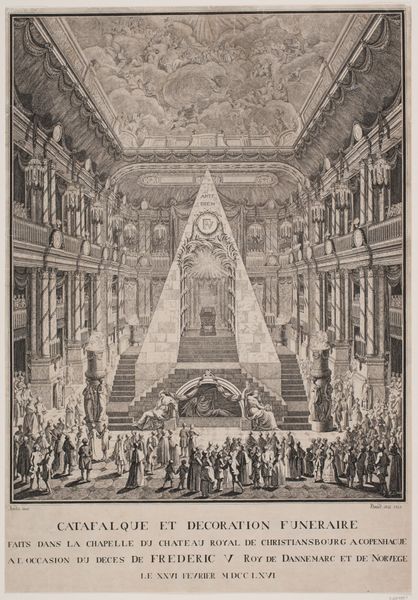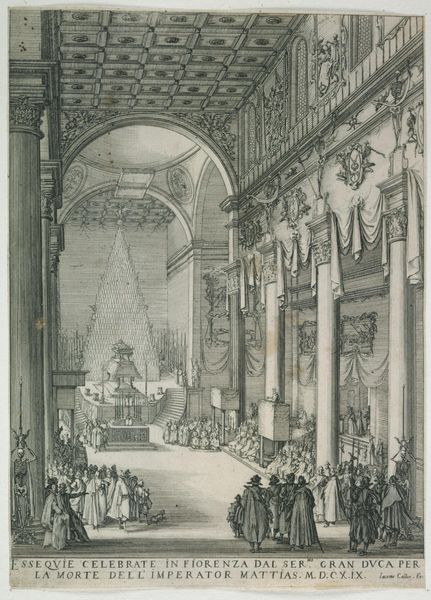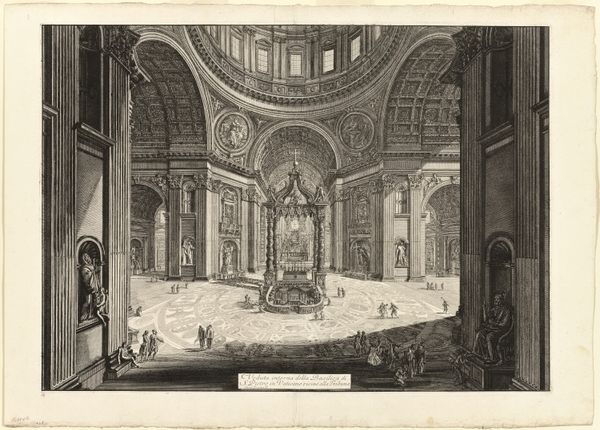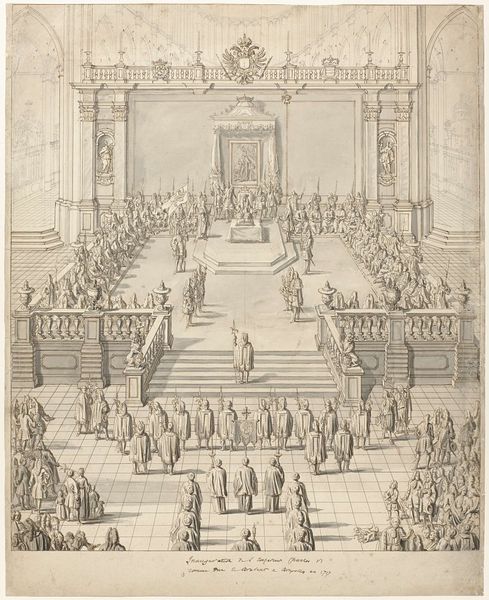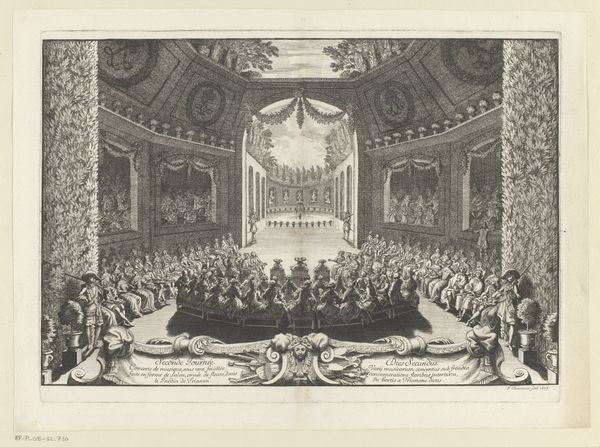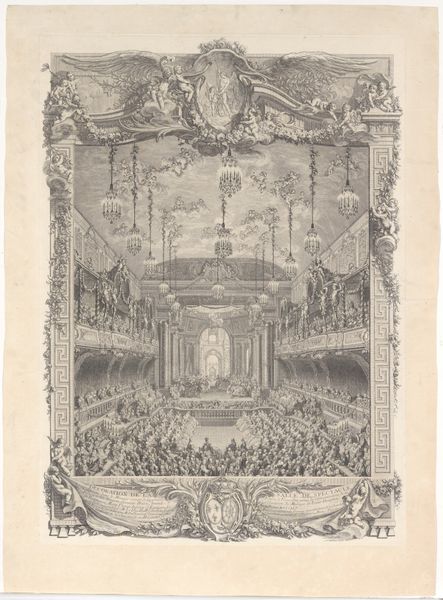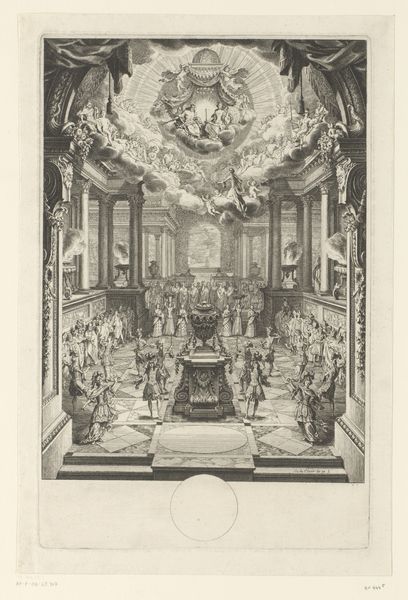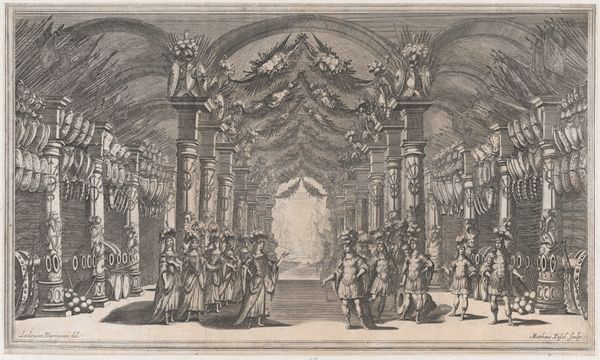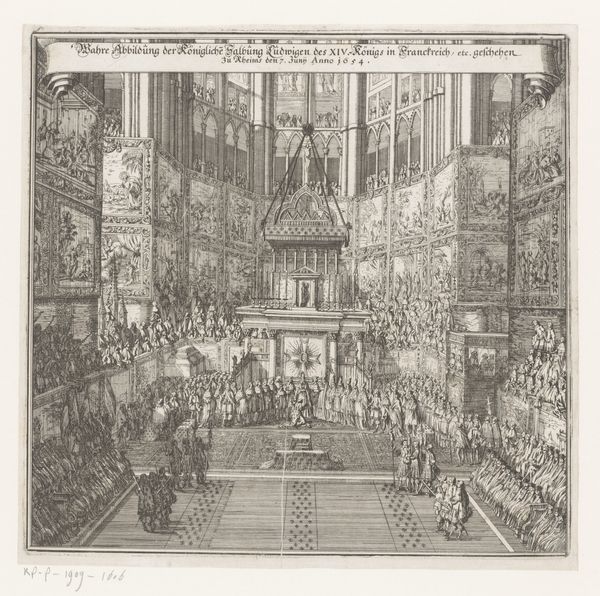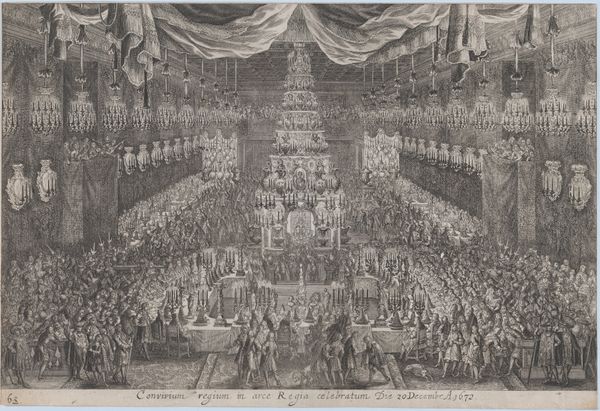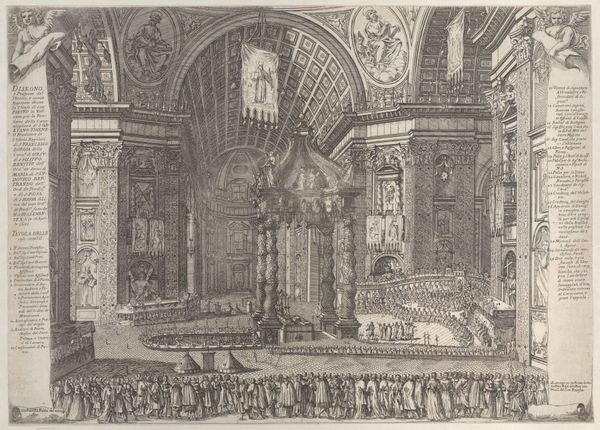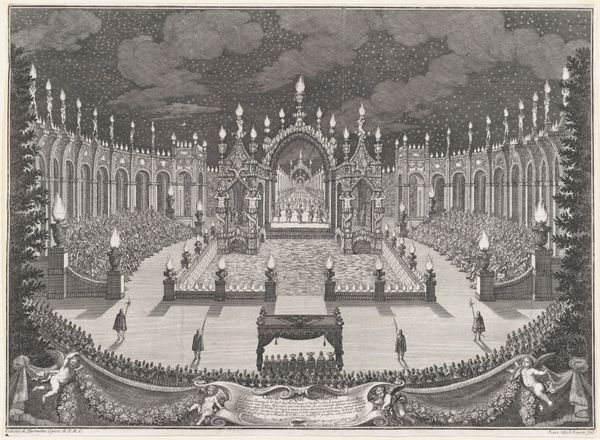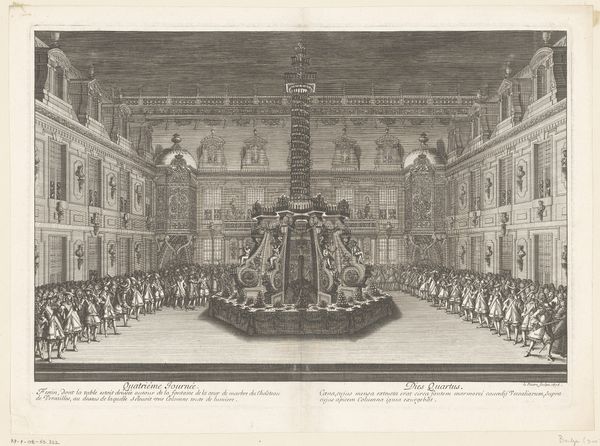
Christiansborg slotskapel med Frederik V.s katafalk 1766
0:00
0:00
Dimensions: 488 mm (height) x 324 mm (width) (bladmaal)
Curator: Standing before us, we have "Christiansborg Slotskapel med Frederik V.s katafalk," a detailed rendering, an etching by Nicolas-Henri Jardin from 1766, presently held in the collection of the Statens Museum for Kunst. The work presents an elaborate state funeral. What springs to mind when you first look at it? Editor: Honestly? That pyramid. I mean, beyond the expected opulence of a royal ceremony, this overwhelming pyramid dominates the space. It is quite the statement piece. It’s a very precise and formal kind of sadness depicted here, isn't it? Curator: The pyramid as a symbol! Its usage in Baroque art serves as both an ancient reference and, potentially, a visual metaphor for stability and eternal life, wouldn't you say? Consider the architectural precision of the piece too, with the symmetry emphasized by Jardin's careful draftsmanship. It lends the whole scene a sense of frozen grandeur. Editor: Definitely a frozen grandeur. The composition makes use of symbols within symbols. The light emanating from within the pyramid, juxtaposed with the somber figures below, tells a clear story, a symbolic passing, almost as if visually echoing concepts of rebirth or ascension... though the mourners remain fixed to their grief. Are there any other peculiar things in the print to examine closer? Curator: Notice the intricate ceiling fresco rendered as meticulously as the architecture below, heavenly host overlooking earthly mourning, reflecting how baroque loved dramatic, contrasting ideas. Editor: And the way the architectural lines all converge, forcing our eyes upwards... fascinating how architecture and set design were employed to project very specific cultural and political narratives. It is as if the print immortalizes a carefully performed ritual. Curator: A carefully staged performance, precisely. And through Jardin's rendering, that performance becomes a historical document. What will resonate, perhaps, with our contemporary viewer about it? Editor: Perhaps it's that strange mix of over-the-top pomp and profoundly personal grief. Both eternally relevant, wouldn't you agree?
Comments
No comments
Be the first to comment and join the conversation on the ultimate creative platform.
